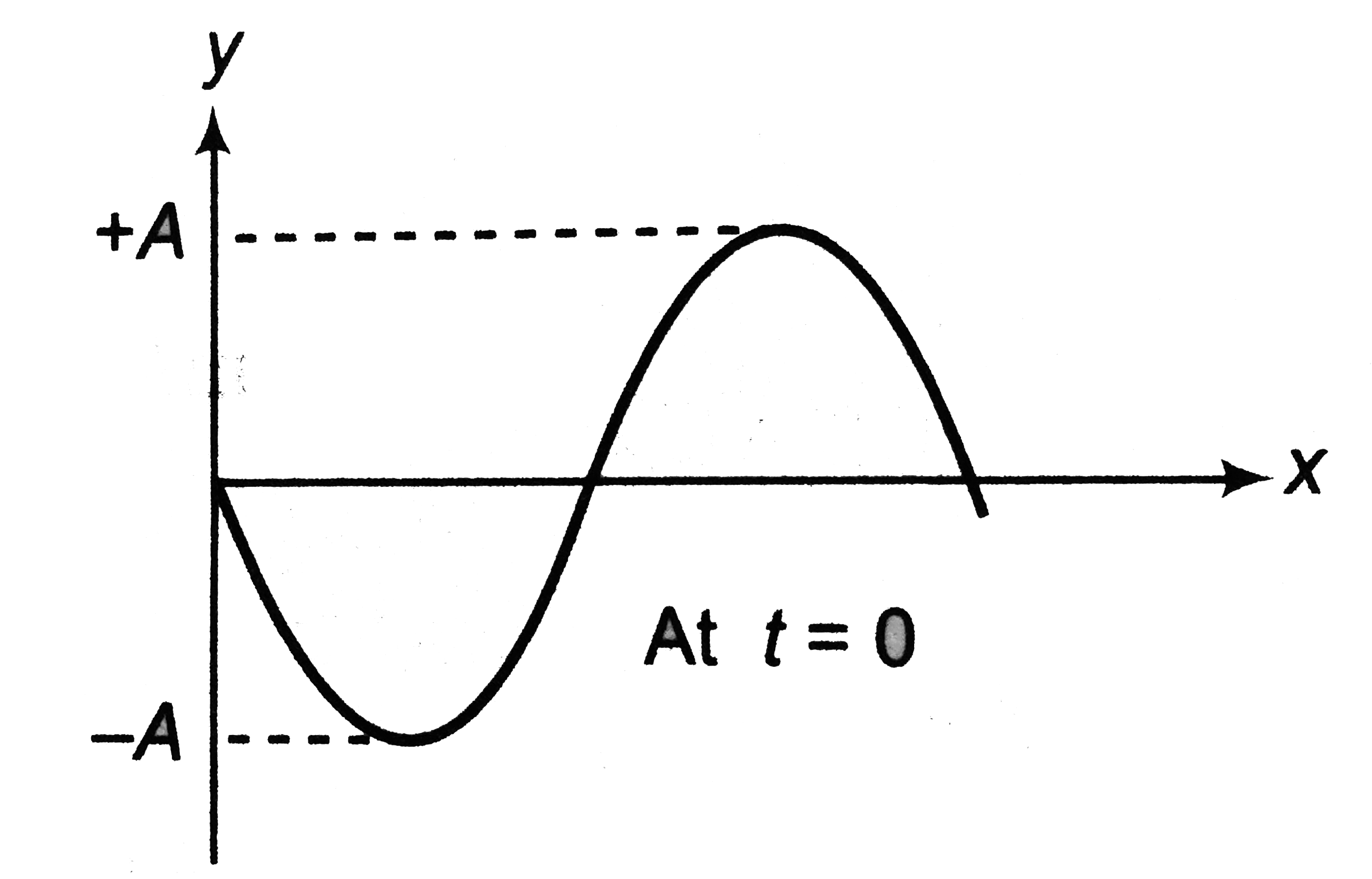For a wave described by y=Asin(ωt−kx), consider the following or not and in what direction and describe whether the particle is speeding up, slowing sown or instantanteously not accelerating?

y=Asin(ωt−kx)
Particle velocity vp(x,t)=∂y∂t=ωAcos(ωt−kx) and particle acceleration
ap(x,t)=∂2y∂t=−ω2Asin(ωt−kx)
(a) t=0,x=0:vp=+ωA and ap=0
i.e. particle is moving upward but its acceleration is zero.
(b) t=0, x=π4k x=π4k
∴kx=π4
vp=ωAcos(−π4)=+ωA√2
and ap=−ω2Asin(−π4)=+ω2A√2
Velocity of particle is positive, i.e. the particle is moving upward (along positive y- direction). Further (vP) and (ap)are∈thesamedirection(⊥harepositive).Hence,thepartic≤isspeed∈gup.<br>(C)t =0 , x =(pi)/(2k) , x=(pi)/(2k) :. kx = (pi)/(2)<br>v_(p) =omegaA cos(-pi//2) = 0<br>a_(p) = -omega^(2) A sin (-pi//2) =omega^(2) A<br>i.e.partic≤isstationaryoratitsextermeposition(y = - A).So,itisspeed∈gupatthis∈stant.<br>(d)t =0 , x= (3pi)/(4k) , x = (3pi)/(4k) :. kx = (3pi)/(4)<br>:. v_(p) = omegaA cos (-(3pi)/(4)) = -(omegaA)/(sqrt(2))<br>a_(p) = -omega^(2)A sin(-(3pi)/(4)) = + -(0megaA)/sqrt(2)<br>a_(p) = - omega^(2) A sin (-(3pi)/(4))= + (omega^(2)A )/sqrt(2)<br>Velocityofpartic≤is¬ative,i.e.thepartic≤ismov∈gdownwards.Furtherv_(p)and(a_(P)) are in opposite direction , i.e. the particle is slowing down.
Topper's Solved these Questions
- BOOK - DC PANDEYCHAPTER - WAVE MOTIONEXERCISE - Exercise 17.14videos
WAVE MOTION
- BOOK - DC PANDEYCHAPTER - WAVE MOTIONEXERCISE - Exercise 17.22videos
WAVE MOTION
- BOOK - DC PANDEYCHAPTER - WAVE MOTIONEXERCISE - Example Type 51videos
WAVE MOTION
- BOOK - DC PANDEYCHAPTER - VECTORSEXERCISE - Medical enrances gallery9videos
VECTORS
- BOOK - DC PANDEYCHAPTER - WORK, ENERGY & POWEREXERCISE - Level 2 Comprehension Based2videos
WORK, ENERGY & POWER
Similar Questions
A wave on a string is described by y(x,t)=Acos(kx−ωt). (a) Graph y,vy, and ay as function of x for time t=0. (b) consider the following points on the string: (i) x=0,(ii) x=pi//4k, (iii) x=pi//2k, (iv)x=3pi//4k, (v)x=pi//k, (vi)x=5pi//4k, (vii) x=3pi//2k, (viii) x=7pi//4k. For a particle at each of these points at t=0, describes in words whether the particle is moving and in what direction, and whether the particle is speeding up, slowing down, or instantaneously not acceleraring.
View SolutionIn a stationary wave represented by y=asinωtcoskx, amplitude of the component progerssive wave is
View Solution
Knowledge Check
- Question 1 - Select One or More
A wave is described by y=Asin(ω−kx). The speeds of which of the following particles in the medium are increasing at time t=0?
Ax=0Bx=π4kCx=π2kDx=3π4k - Question 2 - Select One or More
In a wave motion y=asin(kx−ωt), y can represent
A(a) electric fieldB( b ) magnetic fieldC( c ) displacementD(d) pressure - Question 3 - Select One
A transverse wave is represented by y=Asin(ωt−kx). For what value of the wavelength is the wave velocity equal to the maximum particle velocity?
AπA2BπAC2πADA
In a stationary wave represented by y=asinωtcoskx, amplitude of the component progerssive wave is
View SolutionA transverse wave is represented by y=Asin(ωt−kx).The wave velocity and the maximum particle velocity will be equal at the wavelength of
View SolutionA wave y=asin(ωt−kx) on a string meets with another wave producing a node at x=0. Then the equation of the unknown wave is
View SolutionThe wave described by y =0.25sin(10πx−2πnt) where x and y are in meters and t in seconds , is a wave travelling along the
View SolutionTwo waves y1=asin(ωt−kx) and y2=acos(ωt−kx) superimpose at a point :
View Solution

